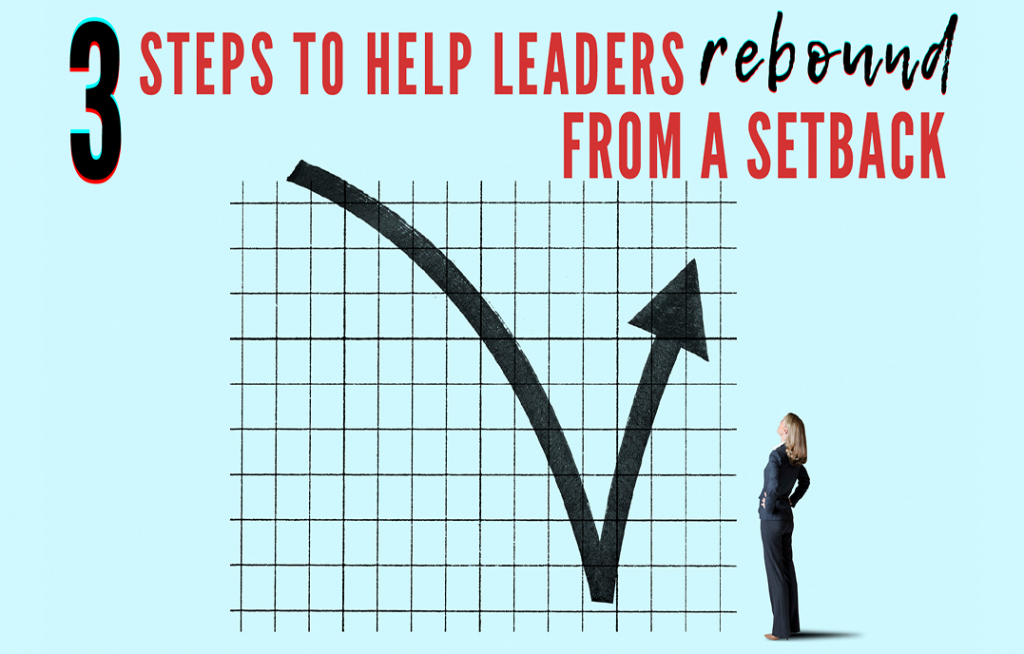
Leadership
In 1992, neuroscientists in Parma, Italy, were studying cells in a monkey’s brain that fired only when the monkey raised its arm. One day, a research student walked into the lab with an ice cream cone. When he absentmindedly raised the cone to his mouth, the monkey’s brain cells for raising its own arm were triggered, and its arm lifted along with the student’s.
Researchers have since found that the brain is filled with neurons that mirror not only the actions, but also the emotions, of those around us. These mirror neurons operate as antennae, allowing us to pick up signals in our social world. When we detect the emotions of another person through their actions, our mirror neurons replicate those emotions.
Your team is not immune to the stress reported by 68% of Americans over today’s political climate (up from 52% reported during the 2016 presidential election). Regardless of the outcome of the upcoming election results, some members of your team (possibly even you) will be very unhappy with the results.
During times of uncertainty, it is the leader’s role to bring order to chaos, calm nerves, and manifest a non-anxious presence. Here are three things you can do during this election season to keep yourself and your team focused:
1. Do an impromptu check-in
Leadership experience builds confidence. Leaders routinely make important decisions — often under conditions of uncertainty — that affect many people over a long period of time. Operating under those circumstances helps leaders navigate the peaks and valleys that come with the job. But, your team members may not have built skills around decision-making. The stress of deciding who to vote for, or of deciding not to vote, can leave them with action anxiety.
Build time into the days leading up to and after the election for more frequent virtual or in-person check-ins with your team members. Making it known that you are available to chat about how they’re doing can be an instant stress reliever. You’ll remind them that they are not alone, and that you’ll get through this together.
2. Focus on Your Core Culture
Research shows that diverse teams are more innovative. Having a diverse workforce could, however, cause some tension during an election season. Team members who are encouraged to openly share opinions and challenge one another’s assumptions could quickly find themselves at an impasse when it comes to debating political issues.
This is the time to remind your team about what binds you. The organizational values, your mission, and solving customer problems can re-ground your team members and eliminate the drama coming from outside of your organization. Find examples of your culture in action and reward those behaviors.
3. Talk about the Johnson Wax Company
In 1886, Samuel Curtis Johnson was a parquet floor salesman in Racine, Wisconsin. One day, he realized that there were more floors than there were products to keep them clean. He mixed his first batch of Johnson’s Wax in his bathtub, abandoned the flooring business and started selling wax as fast as he could make it. Since then, five generations of Johnsons have led the now $10 billion company, making it one of the oldest family-owned businesses in America. 2016 marked SC Johnson’s 100th anniversary. The company has weathered the Great Depression, World War II, the Civil Rights era, 9/11, and 24 presidential administrations.
As you go about your day during this election season, your team will be picking up on your signals. Remember that both your verbal and non-verbal patterns are being imitated. Stay grounded in what unites and provide context that will help them withstand the political peaks and valleys of the time.
Question: How can picturing a monkey, an ice cream cone, and an Italian grad student help you lead your team through election anxiety?
Driven by the premise that excellence is the result of aligning people, purpose and performance, Center for Executive Excellence facilitates training in leading self, leading teams and leading organizations. To learn more, subscribe to receive CEE News!

Leadership
We’ve done a great deal of work in the past five years on the intersection of neuroscience and leadership. It’s something that I’m particularly geeky about. With new technology like MRI scans, we can actually map connections between what today’s leaders navigate and the role the brain plays in supporting or thwarting our efforts. I’ve interviewed professors about the impact of power on the brain.I’ve lectured about how the brain gets hijacked when we’re under stress. I’ve delivered keynotes about how bias is built into our brain’s operating system. The brain takes up about 2% of the total mass of the body, yet it consumes about 20% of the body’s energy. The fact that one small part of our body consumes a disproportionately large amount of its total energy, is something that you’ll want to be aware of as you lead people through times of rapid change, wrapped in COVID.
First, consider this. We’re not the fastest species on Earth. We’re not venomous. Nor are we the largest or the strongest. Yet, our ability to adapt and survive on Earth has been nothing short of incredible. In the 5 million years since early hominids first emerged from east Africa’s Rift Valley, the Earth’s climate has grown increasingly erratic. Over cycles lasting hundreds of thousands of years, arid regions of central Africa were overrun by forests. Forests gave way to grasslands and contiguous landscapes were fractured by deep lakes.
It was within the context of this changing landscape that humans evolved their sizable brains and capacity for adaptive behavior. In such a world, the ability to think creatively, to imagine novel solutions to survival threats, proved to be a major asset. Today, the pace of change has been exponentially compounded by a global pandemic that has stress tested every country, every system, every set of policies, procedures, and processes that we thought we could rely on to navigate change as leaders. Leaders who understand how the speed of change is outpacing our brains’ ability to adapt will be those who steer their teams through the storm.
Let’s begin by looking at the things that the brain thrives on – efficiency, predictability, routines, hardwired habits, and processes. The brain learns the steps needed to complete routine tasks and takes an executive function role to help us get through those tasks without having to work out each step. That frees space for us to think about things completely different than what our bodies are doing, and keeps us from exhausting ourselves by mid-morning. When our routines get disrupted, the brain loses its ability to operate on autopilot. Instead, it senses the stress of disruption and either freezes or stews in a fog of uncertainty.
If you stack the knowledge that the brain consumers 1/5 of the body’s energy and freezes or fogs up in the face of uncertainty, you need a way to pierce through the fog to guide your team back into a productive state and respond to the changes brought about by COVID. Here are three ways leaders can help their teams pierce through the fog of COVID brain:
1. Reintroduce predictability. Even as you continue to deal with the damage caused by the sudden diaspora of your team from a centralized location to individual locations, your team still need regular communication. Silence breeds fear. Even if you have nothing concrete to share, make and keep a regular time to communicate with your team. The predictability of knowing that they’ll hear from you at regular intervals will help negate anxiety and fear.
2. Take control of what you can control. In a crisis, people need to feel like soldiers, not victims. Let your team know what the major challenges will be to navigate change, then put them to work to help solve those challenges. Behavioral Economics tells us that the more time people invest in the hard work of meeting a challenge, the more they will focus on the positive attributes than the negative. This is commonly known as the IKEA effect.
3. Give your team a collective sense of purpose. Fire up your team around the grand vision that needs to be mobilized on a grand scale. People don’t want to be thought of as coin-operated employees. They want to be a part of something bigger than themselves. Share the grand vision with them and help them see how they can contribute to the whole.
Question: What have you done to pierce through the fog of COVID as a leader?
Driven by the premise that excellence is the result of aligning people, purpose and performance, Center for Executive Excellence facilitates training in leading self, leading teams and leading organizations. To learn more, subscribe to receive CEE News!

Leadership
Unfriend anyone on Facebook lately? Avoiding someone because you’re afraid that the subject of politics, religion, or even the weather will come up? In a world that is growing more polarized by the day, there may be no more important skill than being able to hold a meaningful conversation with another human being. In order to free yourself from filter bubbles, radio host and TEDx speaker Celeste Headlee suggests ten ways to improve your conversation skills.
1. Don’t multitask. You can’t fully engage by being partially present. Show respect for the person you’re speaking with by giving your full attention, both physically and mentally, to your conversation.
2. Don’t pontificate. If you don’t enjoy being lectured to, chances are that the person you’re engaging in conversation with would be turned off by your sermon.
3. Use open-ended questions. By starting your questions with who, what, when, where, why or how, you are inviting the other person to think more deeply, and help you mine for insight.
4. Go with the flow. If you’re human, random thoughts will pop into your brain at inopportune moments. Let them come and go. Fight the urge to diverge.
5. If you don’t know, say that you don’t know. Avoid the need to save your ego, and have the humility to admit that you don’t always have the data to support your position.
6. Don’t equate your experience with theirs. Conversations are not about one-upping each other. Let people tell you about their experience without jumping in with, “You think that’s bad …”
7. Try not to repeat yourself. Say it once and let it sit. Otherwise, you’re pontificating (See Number 2) or you’re not engaged enough in the conversation to keep track of your own side of the dialogue.
8. Stay out of the weeds. Nobody cares whether it happened on Tuesday versus Wednesday, in Detroit or Dallas. Skip the minutia and focus on the big picture to stay interesting.
9. Listen. Sounds simple. But talking is actually much easier than listening. Remind yourself that you’re in the conversation to learn, not to convert.
10. Be brief. “A good conversation is like a miniskirt; short enough to retain interest, but long enough to cover the subject.” – Celeste Headlee’s sister
As Bill Nye said, “Everyone is an expert in something.” Rather than avoid half of the population, use conversations as a way to stay curious about your fellow human beings.
Question: How can you get to know people who see the world differently than you do?
Interested in learning more about how to lead effectively and communicate well with others? Learn more about our executive coaching process by emailing us at info@executiveexcellence.com [Read more about our Executive Coaching services.]

Leadership
The CEO’s eyes were filled with tears. I was sitting across from him in his office, bracing myself for the news he was struggling to share. “I just made a deal to sell the company, and most of my team will be replaced” he said. “They’re going to take this very hard. I feel like I’ve let everyone down.”
After a brief pause, I said, “This decision will certainly have an impact on your team. You’ve set a big wave into motion. But how each person responds to that wave is up to them. Some will let it wash over them and they will spin out of control for a while. But others will catch the wave and ride it to new heights. How each person reacts to that wave is ultimately up to them.”
In our years of research and consulting work, we’ve met executives who have been fired, laid off, or passed over for promotion. We’ve ridden with them through mergers, restructurings, and competition for top jobs. Regardless of how the wave was put into motion, we’ve found that one lesson is pretty universal: Even a dramatic career setback can become a springboard to success if you respond in the right way.
Here are three steps to help you rebound from a setback:
Step 1: Move from denial to acceptance
No matter how resilient they are, most executives process news like this by working through the five stages of grief. They start with denial that turns into anger. Next, they bargain over their fate, then fall into a period of depression. For many, it can take years to make it to the acceptance stage.
That’s partly because high achievers tend to have attribution bias. That is, they take too much credit for their successes and assign too much external blame for their failures. It’s a survival mechanism that helps to protect their self-esteem. Unfortunately, it also prevents learning and growth. The next time you suffer a setback, don’t get stuck in the grief cycle. Take action to explore how you contributed to what went wrong. Gather honest feedback from others and critically evaluate if you were culpable in the derailment.
Step 2: Look for meaning in your setback
Once you’ve accepted reality, you’ll be ready to turn your loss into a win. Take advantage of the opportunity to do some deep thinking about who you are and what you want. Chances are, you’ve been climbing the career ladder for so long that you’ve gotten really good at doing something you don’t even like.
Many people fall into careers because of parental pressure or because they needed a job to pay off student debt. The Bureau of Labor Statistics finds that Americans spend over 37% of our lives at work. Over a working lifetime, that adds up to 99,117 hours. Use the power of the pause to allow yourself to look for work that has meaning beyond a paycheck.
Step 3: Move forward with confidence
After you identify possible next steps, it’s time to pick one. Admittedly, this can be a little frightening, especially if you’re venturing into unknown career territory. Reimagining your professional identity is one thing; bringing it to life is another. Remember, though, that you haven’t left your skills and experience behind with your last job, and you’ll also bring with you the lessons learned from the setback. You may also have revised your definition of success.
Use a setback as an opportunity to do some serious discovery work, then act with renewed conviction. Move out of the grief cycle and onto a path that will allow you to thrive.
Question: How have you taken advantage of a setback as a setup for a comeback?
Driven by the premise that excellence is the result of aligning people, purpose and performance, Center for Executive Excellence facilitates training in leading self, leading teams and leading organizations. To learn more, subscribe to receive CEE News!

Leadership
“The social responsibility of business is to increase its profits.” That statement was part of an article written by economist Milton Friedman for The New York Times Magazine 50 years ago this past weekend. In the article, Friedman argued that the more profits that were returned to shareholders, the more money shareholders could use to do social good.
Friedman’s position seemed plausible in the 1970’s. The world’s resources were treated as unlimited. Short-term numbers were valued over long-term strategy. The environmental and social impact of global supply chains went largely ignored.
We’ve since raised awareness that our resources are indeed limited, short-term thinking is unsustainable, and humans all over the world share a desire to be treated with dignity and respect. Today’s savvy leaders understand that long-term sustainability that accounts for multiple stakeholders and short-term returns for shareholders are mutually exclusive.
The Business Roundtable agreed with this position in 2019, stating that, “While each of our individual companies serves its own corporate purpose, we share a fundamental commitment to all of our stakeholders.” Leaders who are in tune with the shift toward long-term value creation understand that corporate social responsibility (CSR) is a good business strategy. Here are five ways in which businesses with a strong commitment to CSR have a competitive advantage:
1. Consumer demand.
Consumers see their purchasing decisions as a conduit to taking accountability in their own lives. A 2018 study funded by the Economist reported that 85% of consumers are more likely to buy from a company with a reputation for sustainability than from a neutral company if their prices were equal. A recent study from Unilever states that 33% of consumers purchase products with sustainability in mind.
2. Talent attraction.
Kevin Jones of Good Capital calls this “meaning premium.” People want to work for a company that allows them to contribute to a greater purpose and are willing to be paid less for the opportunity. When employees are part of a larger mission and feel their contributions make an impact in the world. They’re engaged, proud and motivated.
3. Innovation.
More companies like Nike, GE and Interface, a modular carpet company, are using sustainability to drive innovation. Twenty-six years ago, Interface’s late CEO Ray Anderson committed the company to a zero waste initiative by 2020. Since then, Interface has eliminated hundreds of millions of dollars in resource and waste disposal costs, increased sales by more than one billion dollars and changed the way the entire carpet industry does business.
4. Lower marketing costs.
Your mission will help your marketing. SurveyMonkey is best known for its simple survey creation software, but its Contribute platform was created to give back to deserving causes. For every survey completed, SurveyMonkey donates 50 cents to the survey taker’s charity of choice from a selection of Contribute partners. In February 2020, the company announced that it had donated more than $15 million to organizations such as the Humane Society, Plant-for-the-Planet, the American Red Cross, and Larkin Street Youth Services.
5. Future-bound company.
Successful companies that others evangelize and model represent more than just a product or service. They represent a philosophy, culture or experience. When you channel this back into your business, you’ve made your competitive edge that much edgier.
The social responsibility of business is more than returning profits to shareholders. Having a social and environmental mission is a long-term value creation strategy that is key to lasting success.
Question: What is the social responsibility of your business? How do you make your employees and customers aware of this mission?

Leadership
This year, the whole world was handed a life lesson in how to let go of control. Doing that requires embracing life as more of an improv act than a well-rehearsed Broadway play. While it’s always gratifying to see a play come to a neat close in the final act, it’s equally important to embrace the plot twists along the way.
The plot twists of 2020 have taught us that every disruption, every derailed grand plan, holds an invitation to be grateful for the little things that invite us to live deeper and grow wiser. We’ve learned that life is not linear, but if we can lean into its curves, we can discover its gems.
Our team discovered one of those gems recently when were shooting a promo video for our upcoming Re:Imagine Leadership Summit. We created a carefully scripted template. We set up an outdoor location for the shoot. We invited our Scholar-in-Residence, Dr. Tony Baron, to deliver a powerful, inspiring, personal invitation. The final result was nothing like what we had planned. Instead, we captured one minute and thirty-four seconds of pure joy. You can watch it for yourself here.
Although we didn’t plan a promo video filled with baby giggles, we did plan a Summit designed to give you the inspiration, resources, and tools you need to emerge stronger from a year full of plot twists. Just as the pandemic has invited us to live deeper personally, the Summit is an opportunity for you to lead deeper professionally.
Transformative leadership is an inside job. It invites you to become an archaeologist who digs into your past, an anthropologist who observes what you find (without judgment), and a psychologist who asks you questions to help you reach new insight. It’s a journey best undertaken with guidance. By daring to lean into the curves, you will access deeper dimensions of yourself that will not only enrich your own experience, but will enrich and elevate the experiences of those you lead who have been dealing with plot twists of their own.
Question: Have you experienced any pleasant plot twists this year?
Driven by the premise that excellence is the result of aligning people, purpose and performance, Center for Executive Excellence facilitates training in leading self, leading teams and leading organizations. To learn more, subscribe to receive CEE News!






